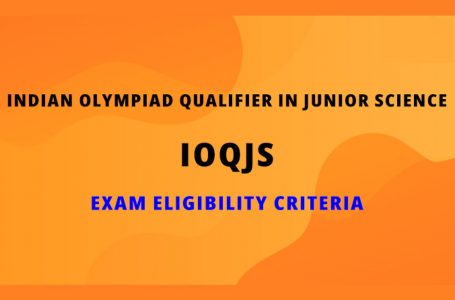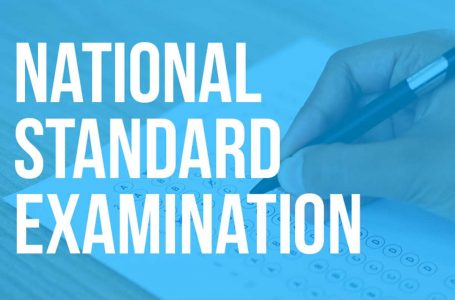Common Admission Test (CAT) Exam
India’s post-recession resilience and rapid transformation from being an agriculture-based economy to a business oriented economy has inspired thousands of students to take up MBA programs at India’s leading business schools such as the Indian Institutes of Management (IIMs) and Indian School of Business (ISB). CAT or Common Admission Test is one of the largest and the most popular aptitude tests, in the country which is used as a criterion to shortlist applicants for admissions to the cream of premier business-schools of the country, the IIMs (Indian Institute of Management). This exam is one of the world’s most demanding entrance examinations for any prospective management student. CAT is a 155 min examination that requires a candidate to work at breakneck speed and those who cannot comply with this speed and efficiency get rejected. You can judge the seriousness or rather the toughness of the exam from the very fact that only 3 out of 100 students are selected through this entrance exam.
Examination Pattern
The CAT exam consists of two sections:
- Quantitative Ability & Data Interpretation
- Verbal Ability & Logical Reasoning
A candidate is required to implement both the sections sequentially with separate time limits for each. 70 min are provided to candidates for attempting 30 questions within each section. Candidates will only be allowed to move from the first section to the other after the completion of 70 min given for the first one. After this shift, one wouldn’t be able to go back to the previous part. Students can review the answers anytime while attempting any section within the time limit allotted for that segment.
Before the commencement of the test a 15 tutorial would be provided to the candidates to make them aware of the procedures of the test. Students are advised to go through this tutorial very seriously as it helps in familiarizing one with the screens, layout, and navigation that applies to the test. At the exam venue, candidates would sit at an individual desk with a computer terminal. One is only allowed to make calculations and do rough work on the scratch sheets provided at the exam center. There are no breaks in between the test and the students are required to leave the scratch sheets behind after the completion of the examination.
Admission criteria
The admission criteria for the admission in the various IIMs are based on two stages of selection:
- CAT exam ranking
- Personalized selection procedure that varies from institute to institute
The second stage includes processes like Written Ability Test (WAT), Group Discussions (GD) and Personal Interviews (PI). The evaluation parameters vary across the various IIMs and a student is selected based on their CAT ranking, performance at the second stage of the selection procedure, previous academic performances, relevant work experience and other similar inputs.
Scoring and negative marking
The scoring parameters of the CAT exam are based on a three step industry-standard psychometrically sound process, which is outlined as follows:
1. Calculation of raw score:
- +3 points for right answers
- -1 point for wrong answers
- 0 point for questions one did not answer
2. Equating the raw score
This is a statistical process that involves the adjusting of scores from 2 or more forms of selection so that the score can be used interchangeably. The industry standards for equating are based on the ones provided by the TS Standards for Quality and Fairness.
3. Scaling of the equated scores
So that the equated scores are appropriately interpreted, they are placed on a common scale or metric and the scaling is done using the linear transformation process.
Scaling Model
- Section Scores = 0 to 225
- Total Exam Score = 0 to 450
All candidates are presented with 3 scaled scores out of which one is an overall scaled score and the other two are the separate scaled scores for each section. The candidates are provided with percentile rankings for each of the individual sections as well as the overall exam score. Remember, a higher score in one section doesn’t ensure a high score in the other.
Eligibility Criteria
- The candidate must be a graduate with 50% marks or equivalent CGPA (45% in case of SC/ST/DA/PWD) or holds an equivalent qualification acknowledged by the Ministry of Human Resource Development, Government of India.
- Candidates appearing for the final year of bachelor’s degree / equivalent qualification examination or those who have completed degree requirements and are awaiting results can also apply. In such cases the candidate is required to submit a provisional certificate, latest by June 30, 2013 from the Principal/Registrar of his/her College/Institute (issued on or before June 30, 2013) stating that the candidate has completed all the requirements for obtaining the bachelor’s degree/equivalent qualification on the date of the issue of the certificate.
Reservation
- 15% – Scheduled Caste (SC)
- 7½% – Scheduled Tribe (ST)
- 27% – Other Backward Classes (OBC)
- 3% – Differently Able (DA)
Important Dates
- Registration Process: Details will be available from 5.00 PM on 3/8/2013
- Online Registration/Voucher Sale: 5th August 2013 to 24th September 2013
- Registration Open: 5th August 2013
- Registration Closed: 26th September 2013
- CAT Test Dates: 16th October 2013 to 11th November 2013
- Results: 14th January 2014
Institutions
The list of participating National Law Universities in order of their establishments is as follows:
- Indian Institute of Management, Calcutta
- Indian Institute of Management, Ahmedabad
- Indian Institute of Management, Bangalore
- Indian Institute of Management, Lucknow
- Indian Institute of Management, Kozhikode
- Indian Institute of Management, Indore
- Indian Institute of Management, Shillong
- Indian Institute of Management, Rohtak
- Indian Institute of Management, Ranchi
- Indian Institute of Management, Raipur
- Indian Institute of Management, Tiruchirappalli
- Indian Institute of Management, Udaipur
- Indian Institute of Management, Kashipur
Careers
Before discussing the various career options that one can avail by cracking CAT exam, it is very important to know that whether you crack it or not, by the end you will have a wealth of information that can be put to practical usage in other areas of your studies and career.
Basically students aspiring to pursue MBA at India’s most reputed management colleges, undertake CAT. After the completion of MBA a thousand doors of opportunities open up for these management freshers with an amazing pay scale waiting to be grabbed by them. After MBA the management postgraduates become ready to be succumbed in various fields like banking, medicine, travel, entertainment, export etc. One can become an entrepreneur after studying in IIM.
Syllabus
1. Quantitative Ability Syllabus
- Number Systems
- LCM and HCF
- Percentages
- Profit, Loss and Discount
- Interest (Simple and Compound)
- Speed, Time and Distance
- Time and Work
- Averages
- Ratio and Proportion
- Linear Equations
- Quadratic Equations
- Complex Numbers
- Logarithm
- Progressions (Sequences & Series)
- Binomial Theorem
- Surds and Indices
- Inequalities
- Permutation and Combination
- Probability
- Functions
- Set Theory
- Mixtures and Alligations
- Geometry
- Co-ordinate Geometry
- Trigonometry
- Mensuration
2. Data Interpretation
- Tables
- Column Graphs
- Bar Graphs
- Line Charts
- Pie Chart
- Venn Diagrams
- Caselets
3. Logical Reasoning
- Number and Letter Series
- Calendars
- Clocks
- Cubes
- Venn Diagrams
- Binary Logic
- Seating Arrangement
- Logical Sequence
- Logical Matching
- Logical Connectives
- Syllogism
- Blood Relations
4. Verbal Ability Types of Questions
- Vocabulary Based (Synonyms Antonyms)
- English Usage or Grammar
- Sentence Correction
- Fill in the blanks
- Cloze Passage
- Analogies or Reverse Analogies
- Jumbled Paragraph
- Meaning-Usage Match
- Summary Questions
- Verbal Reasoning
- Facts / Inferences / Judgments
- Reading Comprehension
5. English Vocabulary
6. English Grammar
7. Verbal Reasoning
Having gone through all the above stated information one needs to think elaborately before applying for CAT exams, as it needs months of hard work and complete dedication to be able to compete in it. Do not be over confident while thinking that you can nail it with 100% accuracy, as it’s practically very tough. Grasp a firm hold on the subjects you think you are good at and then try to cover up the rest of the syllabus. Remember, 40-50 of accuracy in the CAT examination can get you through it.
Advertisement
This year, the Common Admission Test (CAT) for admission in the postgraduate management programmes of the Indian Institutes of Management is going to be held from October 16 to November 11, 2013. Exam’s vouchers will be available at selected Axis Bank branches from July 29 to September 24, 2013 while the registration date is from July 29 to September 26, 2013. The elaborate advertisement is expected to come out in the month of July.
Admit Card
The Admit Card / Hall Ticket is generated automatically and sent to your email once you have completed the online registration process. This process consists of 2 steps, which are as follows:
- Fill-in, review, and submit your personal information. After this an automated confirmation email, containing your Application Summary, is sent to the email address provided by you.
- Schedule your test date, test time, and venue. After a 2nd automated confirmation email, containing your Admit Card/Hall Ticket is sent to the email address provided by you.
After having received your Admit Card, read it carefully and verify all the information. You should then print a copy of it, since it’s mandatory to carry a print out of your Admit Card to the test center. One wouldn’t be allowed to sit for the test without having his/her Admit Card.
Result
The results of the 2013 CAT exams will be out on 14th January 2014.





